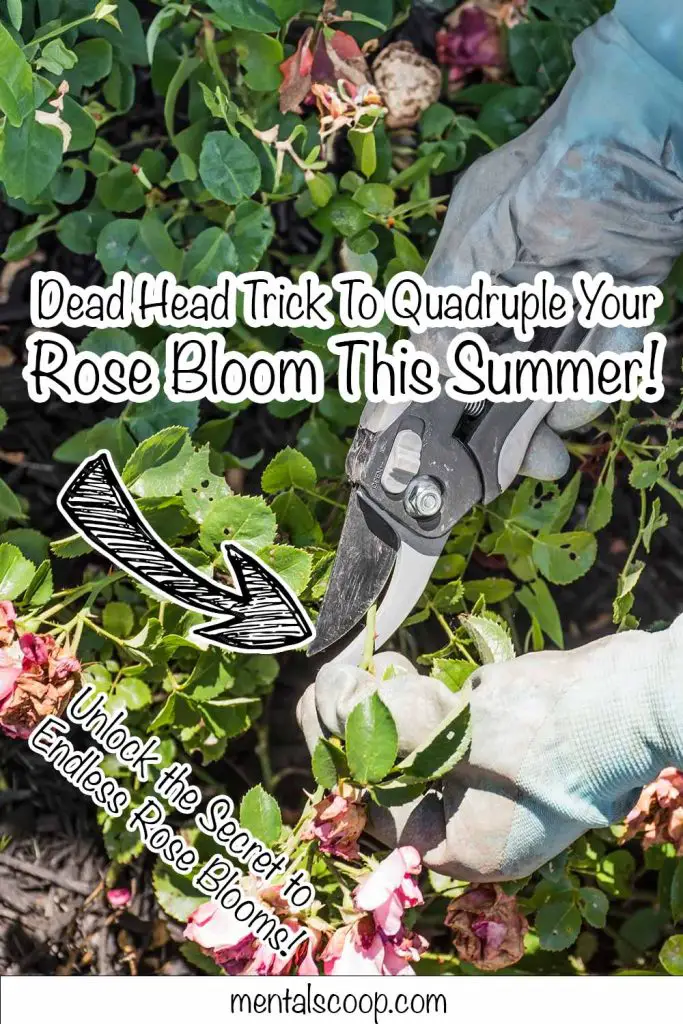Dead Head Trick To Quadruple Your Rose Bloom This Summer!

If you’re a rose enthusiast, you know there’s nothing quite like the sight of your garden bursting with vibrant, fragrant blooms. This summer, we’re sharing a powerful gardening secret that can help you quadruple your rose blooms: the art of deadheading.
This tried-and-true method can transform your garden and keep it blooming throughout the season. Read on to discover how you can harness the power of deadheading to achieve a breathtaking rose display.
Understanding Deadheading: What Is It?
Deadheading is the process of removing spent flowers from plants to encourage new growth. For roses, this practice is essential as it prevents the plant from wasting energy on developing seeds and instead redirects that energy into producing more blooms.
By regularly deadheading your roses, you can keep your plants looking fresh and vibrant while significantly increasing the number of flowers.
Why Deadheading Works
When a rose bloom fades and begins to die, the plant naturally starts to form seeds within the spent flower. This seed formation requires energy, which the plant could otherwise use to produce new blooms.
By removing the spent flowers before seed formation begins, you effectively trick the plant into continuing its blooming cycle. This results in more frequent and abundant flower production.
The Best Time to Deadhead
Timing is crucial when it comes to deadheading. The best time to deadhead your roses is just after the petals begin to wilt and fall off. At this stage, the plant hasn’t yet diverted too much energy into seed production, and you can redirect its efforts towards new growth.
Regular inspections and prompt deadheading throughout the blooming season are key to maximizing your rose output.
Tools of the Trade: What You’ll Need
To effectively deadhead your roses, you’ll need a few essential tools:
- Sharp Pruners or Shears: These should be clean and well-maintained to ensure precise cuts.
- Gloves: Protect your hands from thorns and ensure a firm grip.
- Disinfectant: Use this to clean your pruners between cuts, especially if your roses show signs of disease.
Investing in quality tools can make the deadheading process smoother and more efficient.
Step-by-Step Deadheading Guide
Here’s a detailed guide to help you deadhead your roses correctly:
- Identify Spent Blooms: Look for flowers that are wilting, browning, or losing petals.
- Locate the Nearest Set of Leaves: Follow the stem down to the first set of five leaves.
- Make the Cut: Using your pruners, make a clean cut just above the set of leaves. This is where new growth will emerge.
- Remove Debris: Clear away the spent blooms and any fallen petals to prevent disease.
Repeat this process regularly to maintain continuous blooming.
Common Deadheading Mistakes to Avoid
While deadheading is relatively straightforward, there are a few common mistakes to avoid:
- Cutting Too High or Low: Cutting too high above a set of leaves can leave a long stem stub, while cutting too low can damage potential new growth.
- Ignoring Diseased Blooms: Always remove and properly dispose of any diseased flowers to prevent the spread of disease.
- Inconsistent Deadheading: Regular and consistent deadheading is crucial for sustained blooms.
Avoiding these pitfalls will ensure your roses thrive throughout the season.
Enhancing Blooming with Proper Care
Deadheading is just one part of the equation for a flourishing rose garden. Complement this practice with proper rose care:
- Watering: Ensure your roses receive deep, consistent watering, especially during dry spells.
- Feeding: Use a balanced rose fertilizer to provide essential nutrients.
- Mulching: Apply mulch around the base of your roses to retain moisture and suppress weeds.
- Pruning: In addition to deadheading, perform seasonal pruning to shape your roses and promote healthy growth.
Combining these care practices with regular deadheading will maximize your blooms.
Different Types of Roses and Their Deadheading Needs
Different types of roses may have slightly different deadheading requirements. For example:
- Hybrid Teas: Require deadheading just above the first set of five leaves.
- Floribundas: Often produce clusters of blooms, so remove the entire cluster once the majority of flowers have faded.
- Climbing Roses: Deadhead individual blooms and periodically remove entire canes to encourage new growth.
Understanding the specific needs of your rose varieties will help you deadhead more effectively.
The Long-Term Benefits of Deadheading
Regular deadheading not only boosts your rose blooms in the short term but also contributes to the overall health and longevity of your plants.
By preventing seed formation and encouraging continuous growth, you’re helping your roses conserve energy and build stronger, more resilient plants. Over time, this can lead to a more robust garden that rewards you with an abundance of beautiful blooms year after year.
Mastering the art of deadheading can transform your rose garden, filling it with vibrant blooms throughout the summer.
By understanding the principles behind deadheading, using the right tools, and following a consistent routine, you can quadruple your rose blooms and enjoy a spectacular garden display. Embrace this simple yet powerful gardening technique, and watch your roses flourish like never before!

More interesting articles you may be interested in reading:

